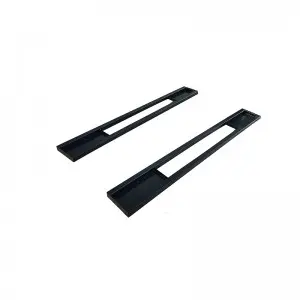****
The cylinder is a fundamental shape in geometry, characterized by its unique properties and applications across various fields. Defined as a three-dimensional solid with two parallel circular bases connected by a curved surface at a fixed distance from the center of the bases, the cylinder is more than just a simple geometric figure. It plays a crucial role in both theoretical mathematics and practical applications, especially in engineering, architecture, and natural sciences.
At the core of understanding a cylinder is the knowledge of its basic attributes. A right circular cylinder, which is the most commonly referenced type, has two identical circular bases aligned directly above one another. The height of the cylinder is the perpendicular distance between these bases, while the radius is the distance from the center to the edge of the base. These parameters contribute to the cylinder’s volume and surface area, essential for various calculations.
The volume \( V \) of a cylinder can be calculated using the formula:
\[
V = \pi r^2 h
\]
Where \( r \) is the radius of the base, \( h \) is the height, and \( \pi \) (approximately 3.14159) is a constant representing the ratio of the circumference of a circle to its diameter. This formula shows that the volume is directly proportional to both the area of the base (which is a circle) and the height of the cylinder.
In contrast, the surface area \( A \) of a cylinder, which consists of the area of the two circular bases and the area of the curved surface, is calculated by:
\[
A = 2\pi r(h + r)
\]

Exploring the Intricacies of the Cylinder: From Basic Geometry to Real-World Applications in Engineering and Design
This formula highlights the relationship between the radius and the height in determining the total surface area, which is critical in various contexts, such as material estimation for construction projects or packaging design.
The cylinder is not only significant in theory but also in practice. Various industries utilize cylindrical shapes and calculations in their designs and applications. For instance, in the manufacturing sector, cylindrical tanks are created for storing liquids, ranging from simple water tanks to complex chemical storage units. The precise calculation of volume ensures that these storage solutions meet safety and operational requirements.
In the field of engineering, cylinders play a pivotal role in mechanical systems, especially in hydraulic and pneumatic applications. Hydraulic cylinders are essential components in machinery, providing the necessary force to lift or compress using pressurized fluids. Understanding the geometry and mechanics of these cylinders allows engineers to design efficient systems that maximize performance while minimizing energy consumption.

Exploring the Intricacies of the Cylinder: From Basic Geometry to Real-World Applications in Engineering and Design
The construction industry also relies heavily on cylindrical shapes. Pipes, columns, and even structural supports often take a cylindrical form, benefiting from their inherent strength and stability. The ability to assess the tensile and compressive strengths of cylindrical structures is vital for ensuring safety in buildings, bridges, and other infrastructures.
Moreover, the concept of the cylinder transcends mere geometric abstraction and finds resonance in everyday life. Cylindrical objects abound in our surroundings, from cans of food to the containers we use for storage. The design of these items often considers both functionality and aesthetic appeal, combining the mathematical properties of cylinders with the art of product design.
Furthermore, cylinders have a significant role in natural phenomena. For instance, when analyzing the Earth and its features, many geological formations, such as certain types of stalagmites or volcanic vents, exhibit cylindrical properties. Understanding these shapes helps scientists study natural processes and predict potential geological events.
Education also benefits from the study of cylinders as students engage with these shapes in various levels of math and science curriculums. Through hands-on activities involving measuring and constructing cylinders, learners develop a deeper understanding of geometric principles, spatial reasoning, and real-world applications.

Exploring the Intricacies of the Cylinder: From Basic Geometry to Real-World Applications in Engineering and Design
In conclusion, the cylinder, a seemingly simple geometric figure, is packed with complexity and significance. Its defined properties facilitate calculations critical for varied industrial applications, while its presence in everyday life showcases the blend of mathematics, functionality, and aesthetics. The cylinder stands as a testament to how fundamental concepts in mathematics can evolve into vital components that shape our world, making it an enduring subject of study across generations.quicklift car lift
